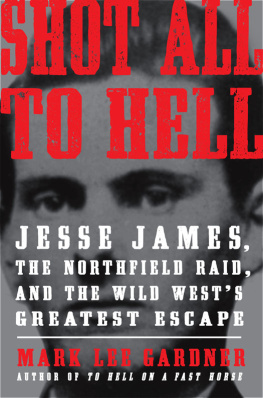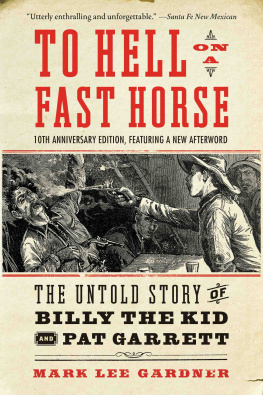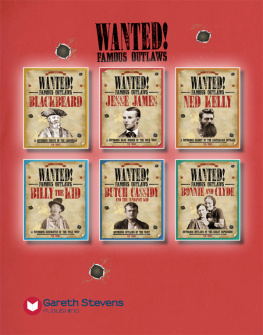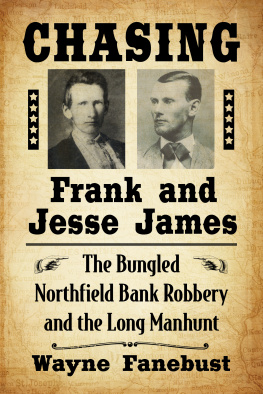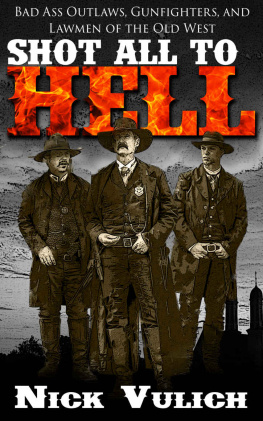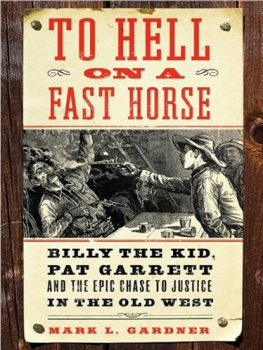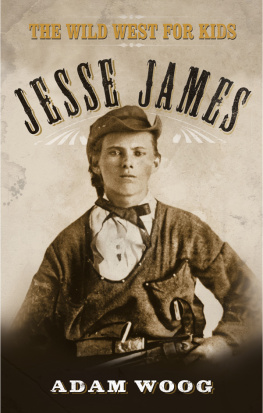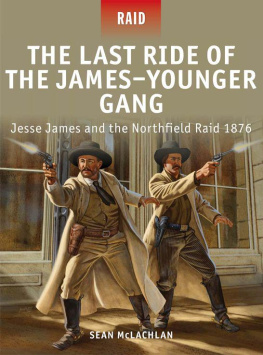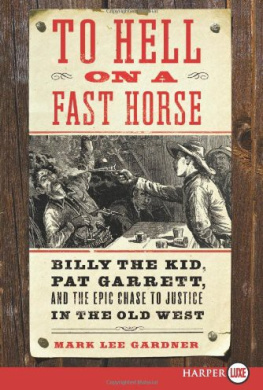
To Duane and Joan Olson
Northfield, Minnesota
Be true to your friends, if the heavens fall.
C OLE Y OUNGER
I n 1897, Stillwater warden Henry Wolfer asked Cole Younger to write down his version of what happened during the Northfield Raid. The newly created pardon board would be considering Cole and Jims application for a pardon, and Wolfer believed a public statement in Coles own words, especially one that included any extenuating circumstances, would help their cause. Eight years earlier, Bob Younger had died of tuberculosis at Stillwater, and even after doctors declared that Bob had only weeks to live, the governor refused to issue a pardon. Cole and Jim could use all the help they could get.

The Younger brothers, Bob, Jim, and Cole, with their sister, Henrietta, photographed in Stillwater Penitentiary shortly before Bobs death in 1889.
(Library of Congress)
In the twenty years since the Northfield Raid, Cole had had a lot of time to craft a version of the debacle that made the Youngers look as good as possible. In his account for Warden Wolfer, he admitted that while the gang had considered other banks besides Northfields, they felt those banks had enough to do to care for the farmers who had already suffered too much from grasshoppers to be troubled by us. The gang chose the Northfield bank, he wrote, because they understood it held $75,000 belonging to Adelbert Ames and his father-in-law, General Benjamin Butler. Cole hoped that by presenting these two former Union generals, both Radical Republicans, as their only intended victims, he could paint the raid as Southerners still fighting the war. Although only partially true, it is an interpretation that persists to this day.
Cole wrote that the gang had agreed they would not shoot to kill and would only frighten people off the street. But all of the trouble came about because of a quart of whiskey. According to Cole, the three inside men drank most of the quart and were dead drunk by the time of the robbery.
Had it not been for the whiskey, Cole asserted, there would not, in all probability, have been a man killed, and I can truthfully say had I known they had whiskey, I never would have gone into town.
Blaming the Northfield disaster on liquor was clever. It suggested that the gangs defeat was more their own making, as opposed to the stubborn resistance put up by Northfields citizens. But none of the gang was truly drunk. Some of the outlaws did visit the saloons prior to the robbery, and Frank Wilcox recalled smelling liquor on Bob Youngers breath, but no eyewitness accounts, including those of Wilcox and Bunker, describe any of the robbers as acting drunk.
Cole also explained the Heywood murder, writing that the last of the robbers to leave the bank told him he saw Heywood jump up and run for his desk. The robber thought Heywood was going for a pistol and ordered him to stop and sit down. When Heywood failed to stop, the robber shot him. And Cole denied being near that part of Division Street where Gustavson was shot. He believed one of the townspeople shooting at the gang had fired the bullet that hit the Swede.
I know that neither Jim nor myself fired a shot in that part of the city, he insisted.
These last statements are mostly fiction as well. Though it is possible that Frank James told Cole he believed Heywood was going for a pistol, Wilcoxs testimony makes no mention of Heywoods killer shouting at the acting cashier to stop. On the contrary, Wilcox makes it vividly clear that the shooting was nothing less than cold-blooded murder. And despite Coles repeated denials that he shot at Gustavson, eyewitnesses identified him as the Swedes killer.
T he pardon board received an impressive stack of letters and petitions in support of clemency. As was to be expected, many came from Missouri, including a petition signed by members of the states General Assembly.
To a certain extent, the petition read, the Youngers were the last victims of the Civil War, having been so unfortunate as to live upon the border at a time when bad blood was hottest and evil passions most fully aroused. Former governor Crittenden also urged a pardon on the grounds that they have paid a severe penalty; that they have been exemplary prisoners for twenty years; that they are now old and broken down; the law has been vindicated....
A surprising number of Minnesotans supported the pardons as well; among the petitions submitted favoring clemency was one signed by eighty-six citizens of Madelia, including three surviving members of the Madelia Seven. Another active supporter was one Horace Greeley Perry, the girl Cole had taken on horseback rides in St. Peter, before the raid. Now grown up, the attractive, twenty-eight-year-old Miss Perry served as the St. Peter Journals editor. She visited the Younger brothers monthly.
But there were plenty of Minnesotans, especially in Northfield, who opposed the pardons. The townspeople were incredulous over Coles published account of the raid, and not only did they forward their own petition, but the town sent a delegation to the pardon hearing in St. Paul to demand that the board keep the brothers in prisonfor life.
The board listened to testimony on the Youngers application on Monday and Tuesday, July 12 and 13, and of all those who spoke either for or against clemency, Mayor A. D. Keyes of Faribault made the most penetrating comments:
These men come here and ask for a pardon on the ground that they have reformed in mind and morals as well as in heart, and they are prepared to become good citizens, if they are released. We claim that it is not too much to ask that they shall remain where they are until they disclose the name of the man who killed Heywood. It is not an element of good citizenship to conceal a murderer. Good faith on their part demands that they disclose the name of the man who killed Cashier Heywood, that that man may be brought back to Minnesota and punished. If the murderer was Frank James, as we are led to believe, then he has never suffered anything for his crime. He has never even been imprisoned, and it is no more than right that he should suffer the penalty in some measure at least. If the Youngers are now the good citizens they claim to be, they would go on the stand, and, by telling the truth, would assist the authorities of this State in bringing the Northfield murderer to justice.
The board refused to pardon the Youngers. But the brothers did not have much longer to wait. In 1901, the Minnesota legislature passed a bill permitting the parole of life prisoners after serving thirty-five years, minus a deduction for good behavior, which made for a minimum requirement of twenty-four years and seven months. The bill was clearly aimed at the release of the Youngers, who had already served nearly twenty-five years at Stillwater and, as inmates, had not a single mark against them.
Following the legislatures lead, then, the pardon board approved the Youngers parole on July 10, and in a display of just how much the world had changed since that fateful September day in 1876, the brothers received the news by telephone. There were conditions, however. The Youngers could not leave Minnesota, nor could they exhibit themselves in any dime museum, circus, theater, opera-house, or any other place of public amusement or assembly where a charge is made for admission.
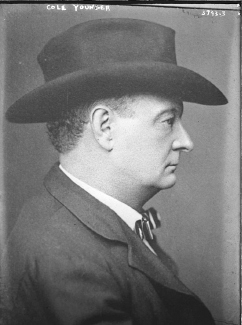
Next page
